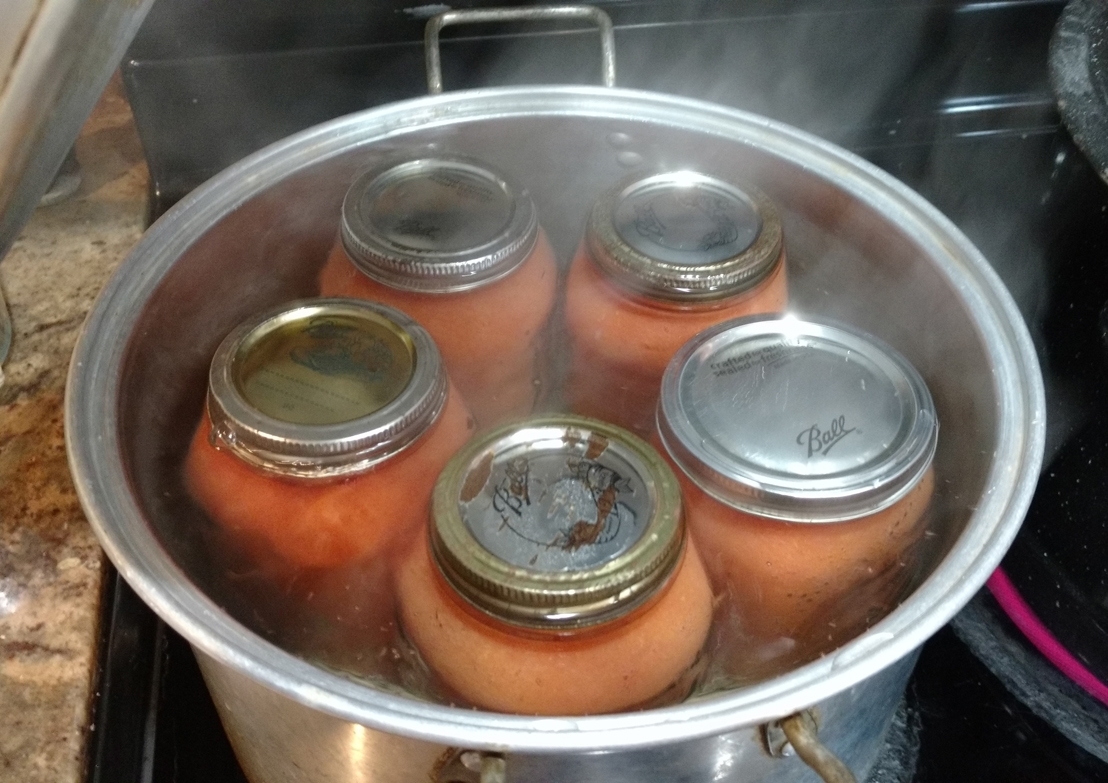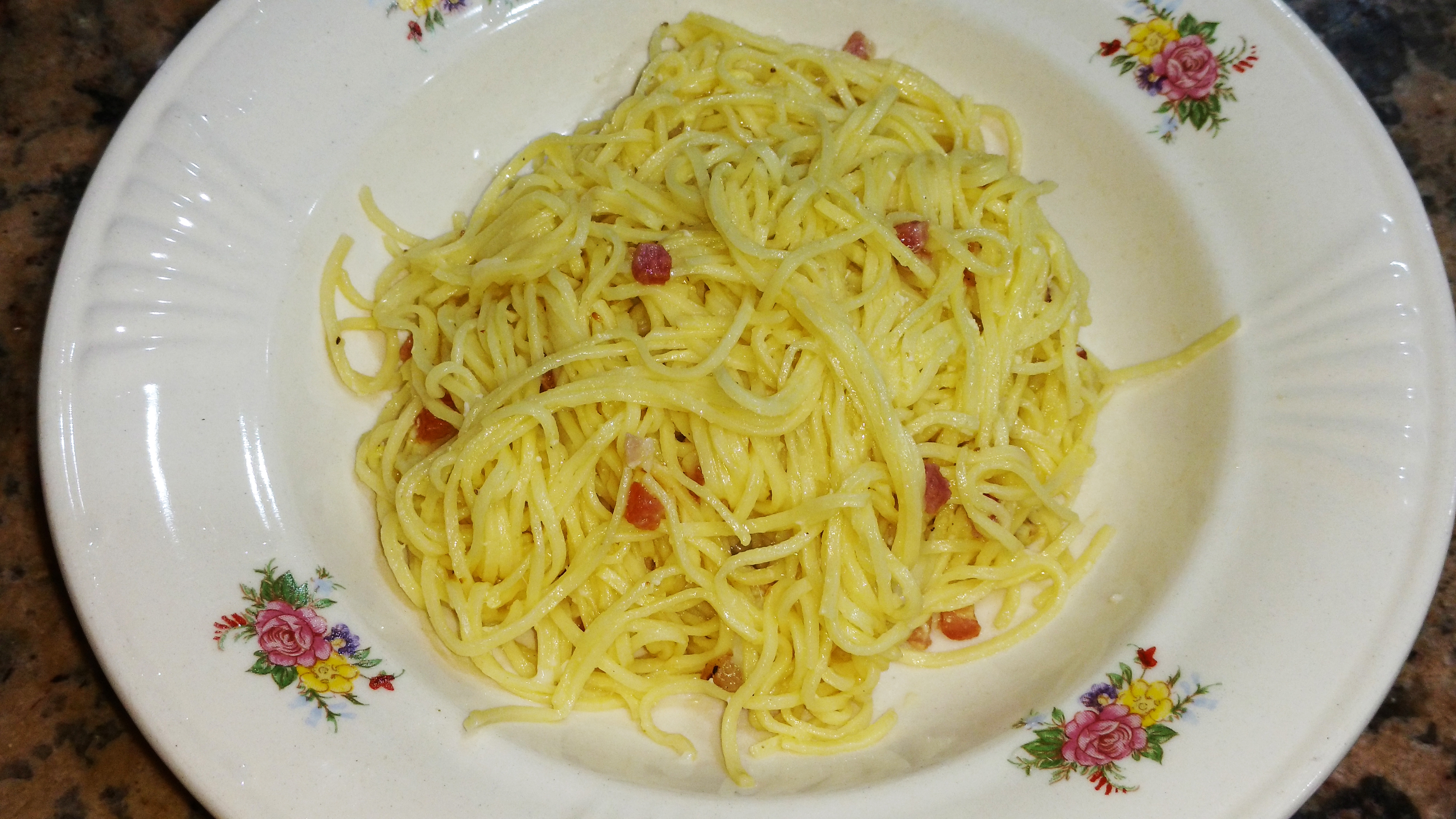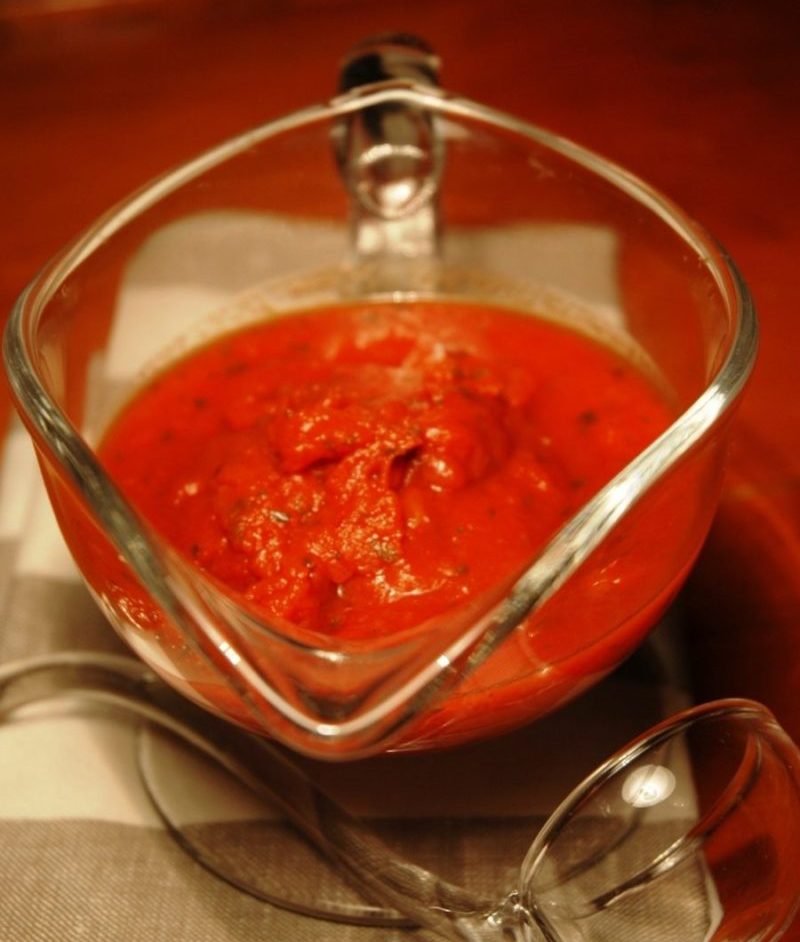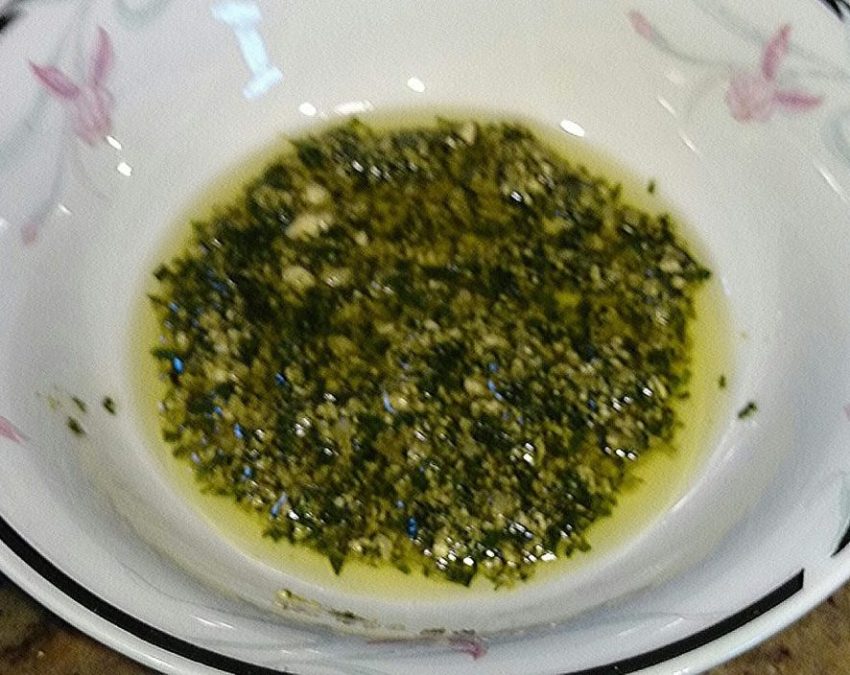Updated 07/27/21
When I was growing up, I always knew when it was almost the end of summer just by the smell of ground up tomatoes that filled the air. Yes, it was time to “do the tomatoes”, which meant that all the Italians on my block were busy grinding up tomatoes by the boxes and jarring them so that they would have homemade tomato sauce for the next year. And let me tell you, there’s nothing quite like eating homemade tomato sauce made from fresh tomatoes!
You can jar tomatoes anytime, but here in the Northeast they are harvested locally from mid-August to late September, and so are the freshest and cheapest to buy. A 20 lb. box of plum tomatoes yields about 9 jars of sauce. Make sure that the tomatoes are ripe. If they’re not, the sauce will be a little sour. Also, boil the jars or run them through the dishwasher before using them to kill any bacteria. You can reuse lids as long as the inner part that covers the jar has no scratches or rust on them.
Cover the table and chairs (if you’re using them) with a big garbage bag so that it will be a little easier to clean up afterwards by just removing the bag.
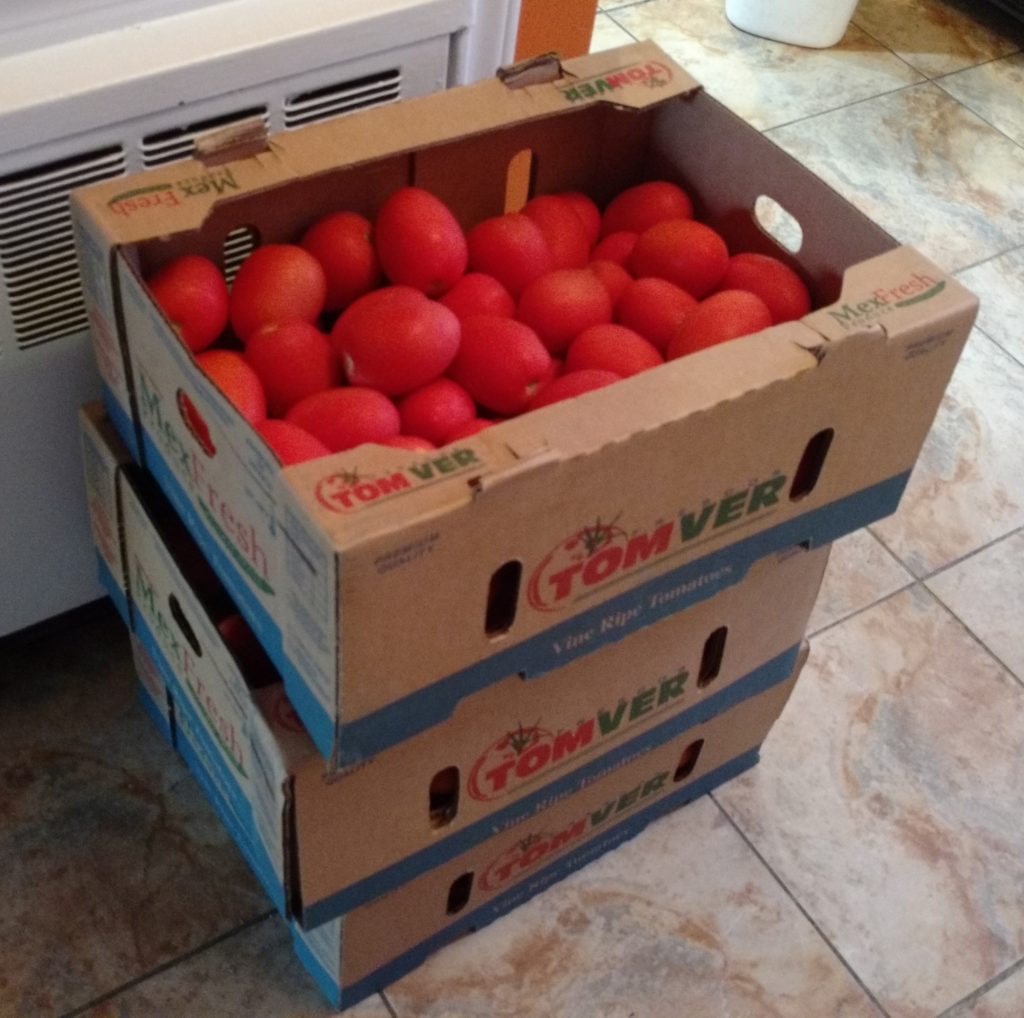
25 lb. Boxes of Tomatoes
Here are instructions on how we’ve always done it at home:
What you will need:
fresh basil leaves
box of salt
20 – 25 lb boxes of fresh plum tomatoes, depending on how many jars you’d like to make
Mason jars
tablespoon
ladle
sharp knife
2 or 3 large garbage bags
several large plastic bowls
2 or 3 large pots
towels, to clean up and also to wrap jars
1. Add about 3 fresh basil leaves and 1 T of salt to each jar.
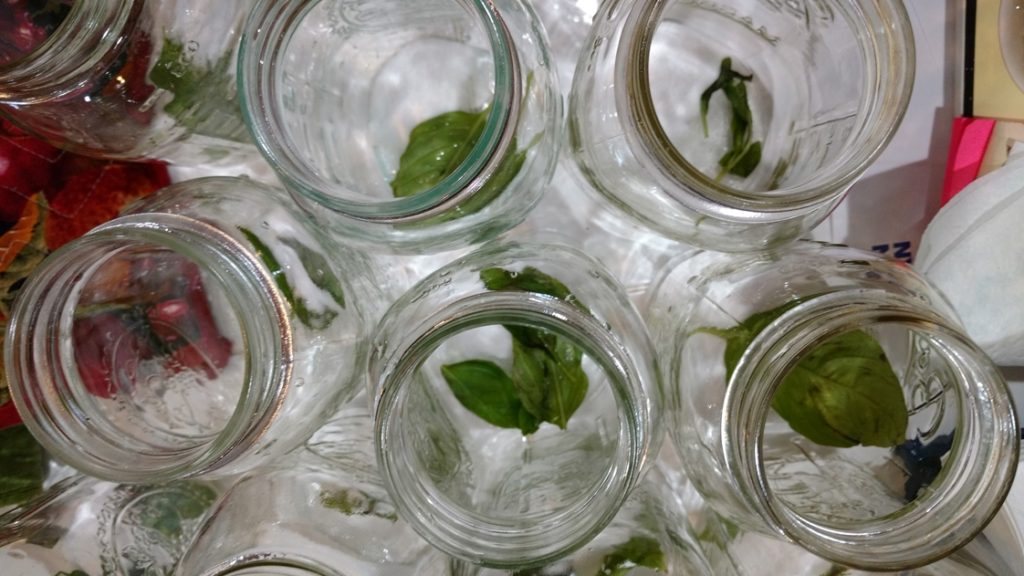
Preparing the jars with salt and basil leaves
2. Using a sharp knife, cut the tomatoes in half or in quarters, depending on the size, so that they are easier to put into the strainer.

Cutting the tomatoes to make it easier to grind.
3. Place one bowl to catch the tomato liquid/sauce, and one to catch the ground up tomatoes under the tomato strainer. Keep replacing bowls as needed. Slowly put in pieces of tomatoes into the strainer and push down on them with accessory provided.
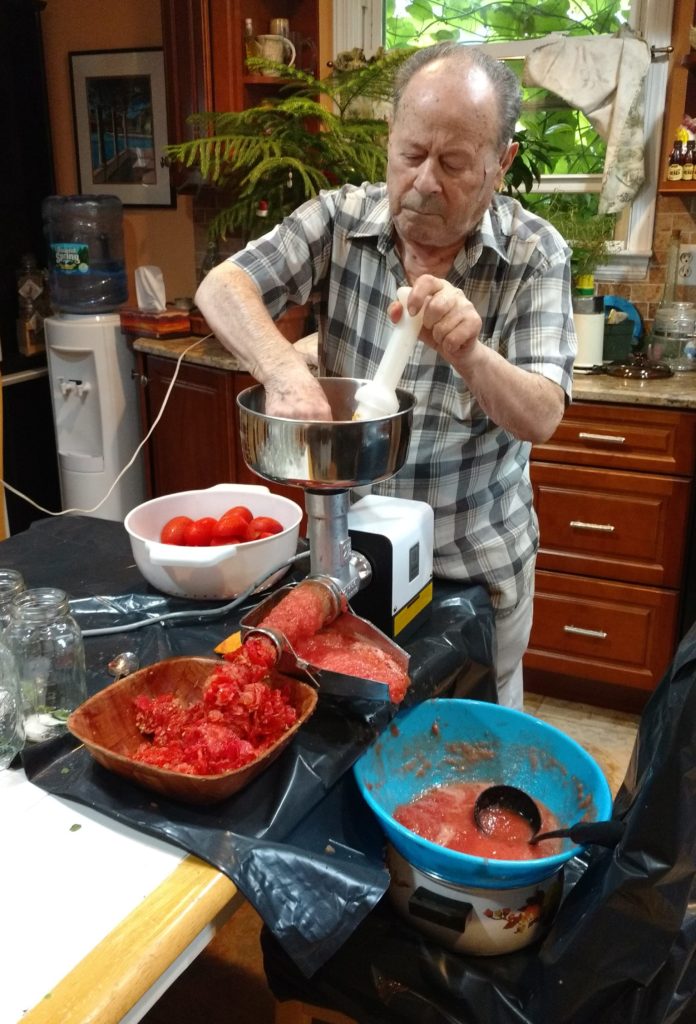
Dad grinding the tomatoes with an electric strainer/food mill
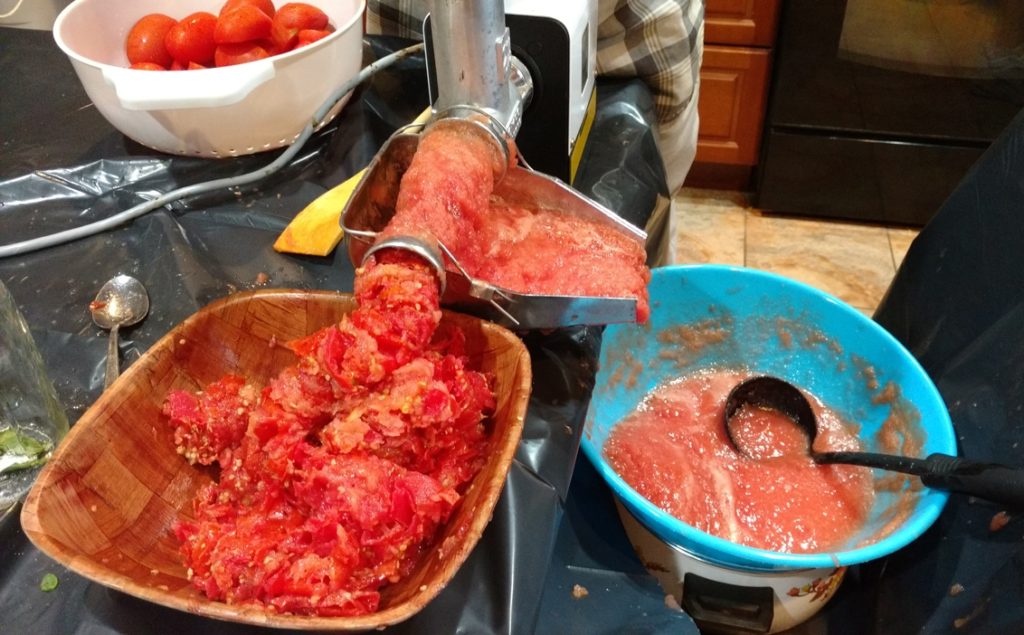
Grinding the Tomatoes for Sauce
4. When the bowl is full of ground up tomatoes, throw the ground up tomatoes into a garbage bag. Using a ladle, scoop up the tomato sauce from the other bowl and fill each jar with it, leaving about 1 inch empty on top to give it room to expand when boiling.
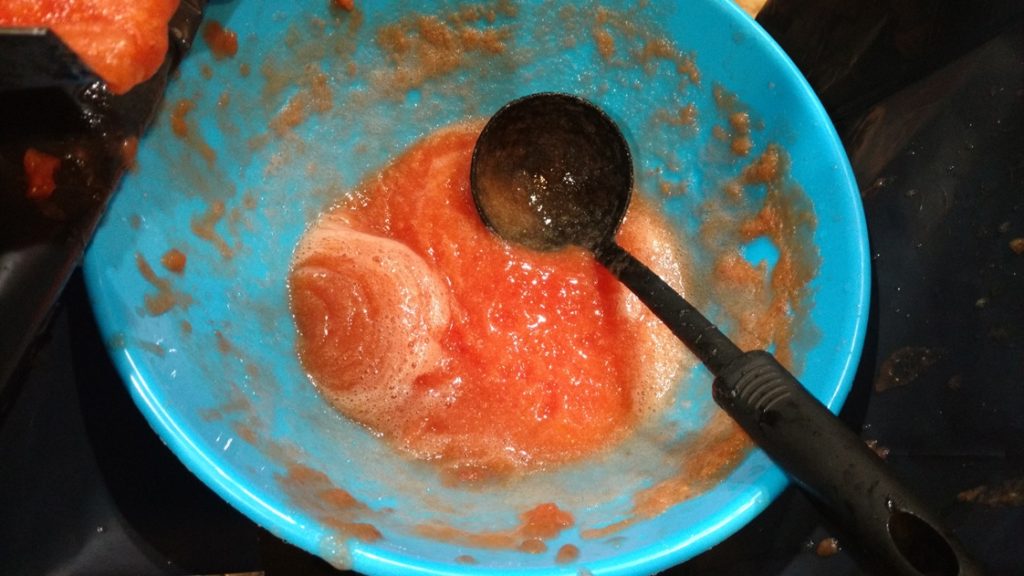
Tomato sauce consistency
5. Put each jar in a large pot then add enough water to cover up to where the tomato sauce is in the jar and boil for 20 minutes (see photo above and below).
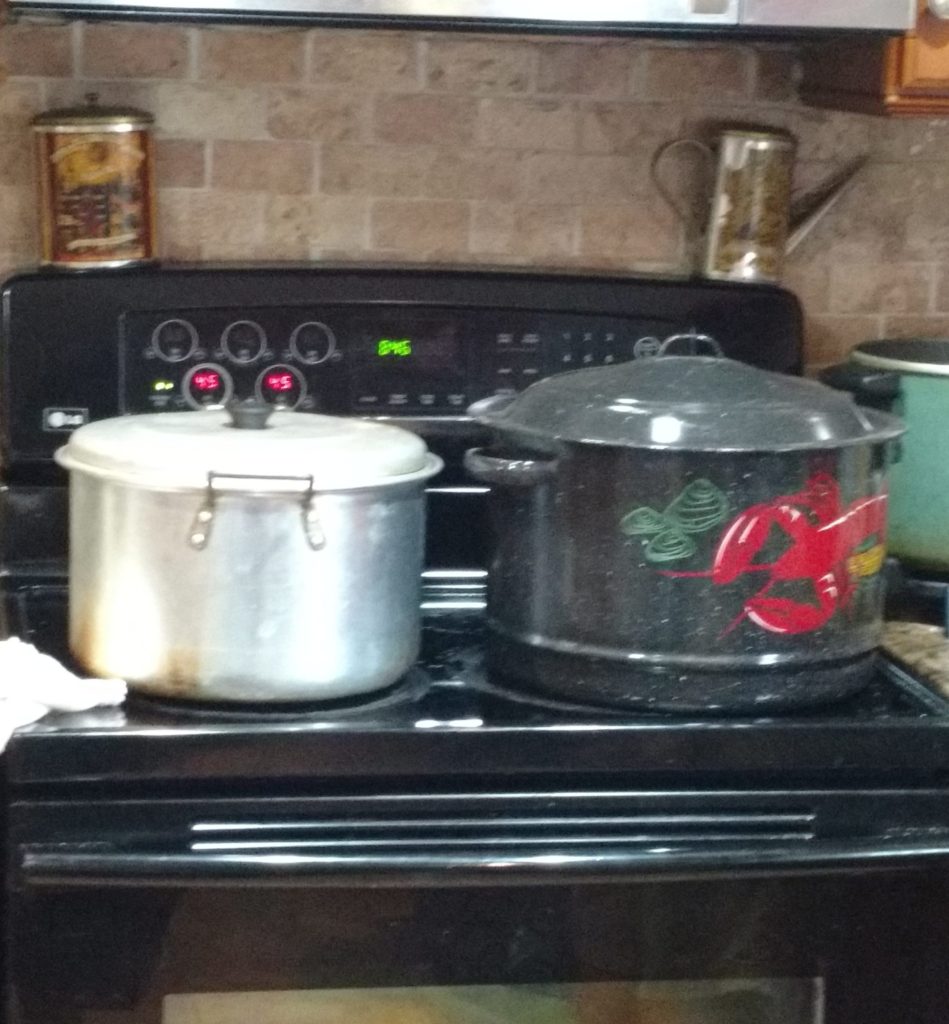
Boiling pots of water with jars of fresh tomato sauce
6. Remove jars from the pot and place them in a warm oven. If there’s no more room to put them all in the oven, wrap jars with a towel.
As the jars cool, you will hear the tops of the lids “popping” as a vacuum is formed inside the jars. This is what preserves the tomato sauce for such a long time. You can then use the tomato sauce right out of the jar by heating it up, or adding meat, etc. to it.
Leave me a comment at the bottom if you’ve tried doing this and let me know how it worked out for you!
Join my mailing list so that you can have new recipes delivered right to your inbox!
Originally posted 10/20/17

